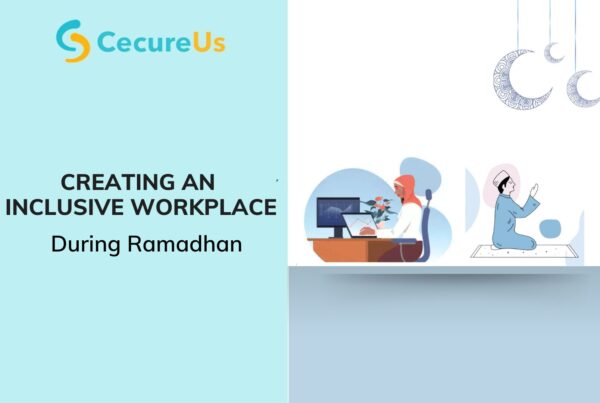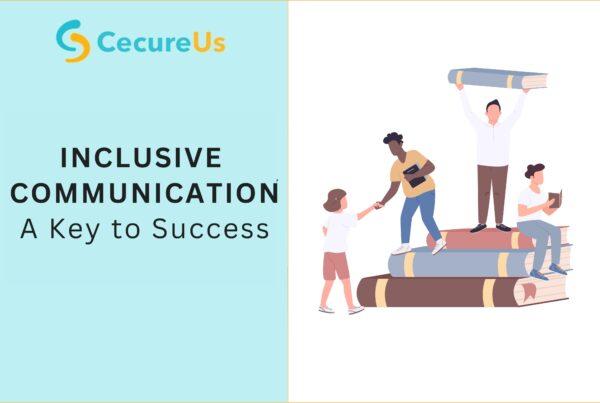The world is not an easy place for the LGBTQ+ community. For centuries, thanks to preconceived notions in society, the stigma has made it challenging for LGBTQ+ to come out and express themselves or feel included. However, in the past few decades, society has become evolved. With Inclusive diversity taking the corporates on a progressive path, several organizations have opened up opportunities for LGBTQ+ in their workplaces. The workshops on Inclusive Diversity have enlightened employees about the importance of inclusiveness and how understanding the nuances of inclusive diversity can make the organization a better place.
June is around the corner, and with many preparing to join the LGBTQIA Community for their Freedom Movement, celebrations are on the way. While we may not see actual parades happening in society, many who belong to the community with their supporters gear up to go virtual this year in their pride month celebrations.
June is Pride Month, as it is famously called the world over. Indians have joined the celebrations slowly but steadily over the second half of the last decade. While the Rainbow flags and merchandise are coming out everywhere, have you ever wondered why there is a celebration of Pride Month and its true significance? Read on to know more!
How it all started?
The LGBTQIA community today holds more rights in society across the globe than it did a century ago. The struggle has been long and tiresome, but they push on for inclusiveness and complete freedom to be themselves among others in society. Many have come forward to show solidarity and support for this cause. Every year the celebrations and the freedom movement only grow stronger with more people coming out of the closets and many more showing support to the community.
Even in the latter part of the 1900s, the situation in society was different. In many countries, especially the developed ones, being open about sexuality (if a person was not straight) and expressing it in any way was strictly looked down upon to the extent of it being a criminal offense.
The LGBTQIA community was forced to act ‘normal,‘ with homosexuality even considered a mental disease!
In New York, the late 60s saw a few Gay bars become a safe haven for Homosexuals, Transgenders, and anyone else who did not fit the stereotypical norms of the society. Here, the customers could be themselves and embrace their sexuality, irrespective of their gender. The Stonewall Inn, situated in the Greenwich Village phase of New York City, was one such Gay bar.
The Stonewall Uprising:
On June 28, 1969, the customers of the Stonewall Inn began trickling in for a night of relaxation. It was a Saturday, and the bar was filled with regular patrons. An evening of fun was disrupted by the New York State Policemen. Not dressing as per the accepted gender norms was deemed a criminal offense and gave power to the police to arrest people for the same. For this reason, the police entered the bar and began shoving the customers out.
By this time, the customers had grown weary of the discrimination. They were enraged with the mistreatment faced so far because of their sexual orientation. Tensions escalated quickly, with the crowd present turning against the Police force. The news spread soon, and the LGBTQIA community from across the city joined the customers at the bar, turning the episode into a riot.
The riot was soon quashed for the night, only for them to continue over the next few days, only this time erupting across the city, eventually starting movements across societies. While several stirs had been organized by the LGBTQIA activists from the early 1900s, the fervour of these riots and the eventual support from the people of society gathered the media attention and the entire United States.
This marked the first significant rising of the community, fighting for their rights to be themselves in what they wore, who they chose to be with, and the right to be considered ‘normal’ as everyone was. This also changed a lot for the LGBTQIA community in recognition, which was not entirely on a negative note. They garnered the support of thousands for the cause of inclusiveness, and rightly so.
In 1970, the first Parades happened throughout the United States in June, marking the pride month celebrations to commemorate the Stonewall Uprising, as it came to be called soon after. The celebrations were to recognize it as a significant moment in the history of the LGBTQIA Freedom Movement. Many more Pride Parades have happened since, and until 2020, which marked the 50th Anniversary of Pride Month.
1973 saw another major milestone when homosexuality was no longer considered a mental illness in society, marking the beginning of inclusive diversity for the LGBTQ+ community. 2009 witnessed a law being introduced, criminalizing gender identity crimes, labelling them as hate crimes. The Supreme Court of the United States legalized same-sex marriages in 2015 to set the stage for inclusive diversity for the LGBTQ+, a milestone to be appreciated.
Why celebrate and be a part of the Pride Month Celebrations?
When we indulge in the celebrations, we extend our support for the concept of Inclusive diversity and for the entire LGBTQ+ community. The international community has taken quite a while to begin accepting those of the Pride Community without any prejudices whatsoever. In India, the story has been no different. It is imperative to understand that, while the people in the LGBTQIA community are different from the standards that society has so far set and strived to maintain, they are no different from anyone else in the Human Race. It is the right of every individual to be themselves and dress as they want to, or to own their sexuality, orientation, and who they want to live with. If differences are to be spoken about, then it is crucial to remember that every person on this planet is unique, and no two individuals can be forced to become like the other against their will.
This difference is what pride month and parades celebrate. The celebrations of pride month also demand that every individual owns the right to be themselves, however different they may be from the norms of the society.
The aim is to incorporate inclusive diversity in every nook and corner of the society, making it easy for a person of the LGBTQIA community to walk into any room, be open about their identity, and be treated just like anyone else sans judgment or prejudice.
The Spring 2019 Global attitude survey that measured the percentage of acceptance of same-sex relationships from 2013 to 2019 recorded the following numbers: 76 – 86% in the UK, 60 – 72% in the US, and 15 to 37% in India. These numbers show the paradigm shift in these countries concerning the LGBTQIA+ community, with a lot of them recognizing the community as equal and criminalizing gender-based hate crimes.
As of 2019, 28 countries have legalized same-sex marriages, and 43 countries have made provisions to protect the community against hate crimes and homophobia. These countries, however, are outweighed by 72 countries that criminalize same-sex activity and 8 countries that punish these activities by death.
Thus, celebrating Pride Month and emphasizing the need for the complete Global recognition of the community is currently the need of the hour.
The Pride month: Celebrations and scenes in India:
In the Indian context, on September 6, 2018, the Honourable Supreme Court of India, in a landmark ruling, abolished Article 377 of the Indian Penal Code (IPC), decriminalizing it, much to the applause of the public. In a hearing, a Madras High Court Judge recently sought counselling to understand homosexuality and the LGBTQIA community, wanting to learn how to be inclusive. Our country, rich in diversity, is bound to be proud of these changes!
With the Supreme court’s ruling, much has changed in the country, but we still have a long way to go. The changing laws show that we are on the right path, but it will take longer for the mindsets to change, evolve, and adapt to the concept of inclusive diversity. More than the Laws changing, the need for education, understanding, and awareness of sensitivity to the LGBTQIA community will help our society progress when implementing inclusive diversity as an entity.
The younger generations have been showing great support to the cause of pride month, and we have every reason to believe that while acceptance may be slow, we are well on our way to achieving what the celebrations of pride month and the movement itself seek to achieve.
For more information on Prevention of Sexual Harassment(POSH), EAP (Employee Assistance Programs), and D&I (Diversity and Inclusion) offerings by CecureUs, please contact connect@cecureus.com or call us at +91-7200500221





One Comment